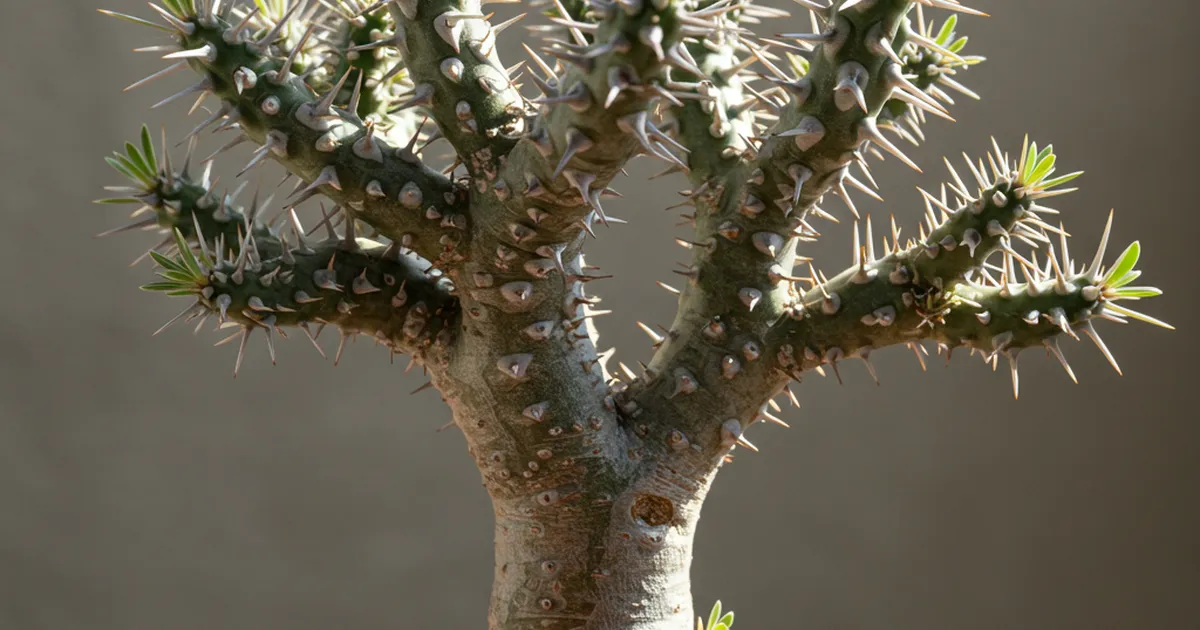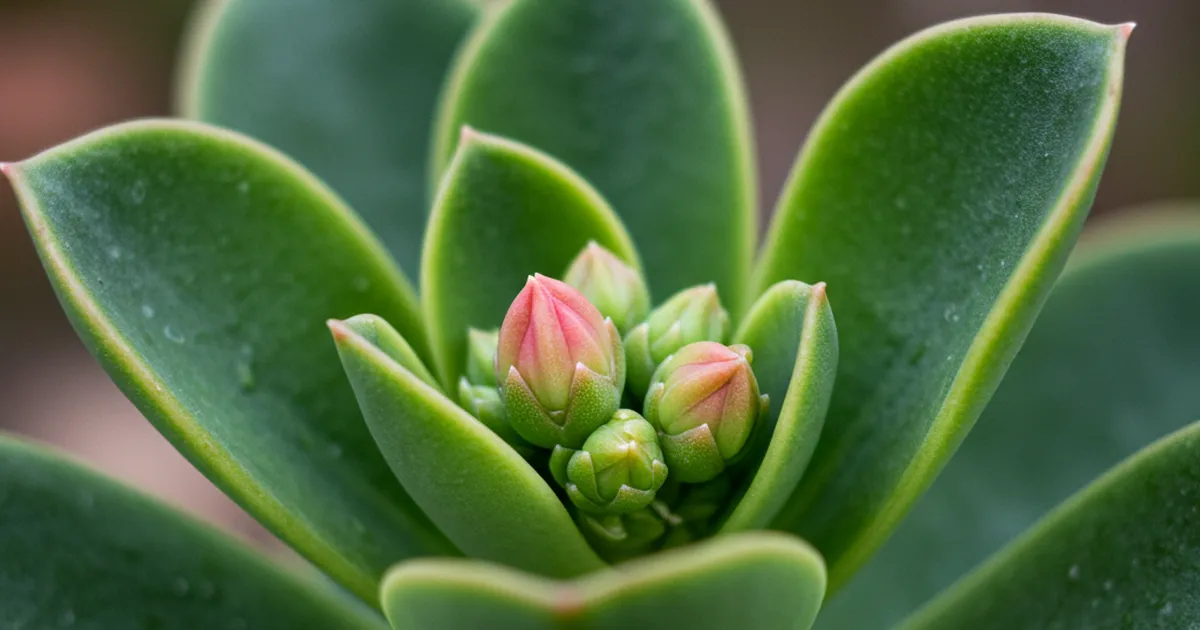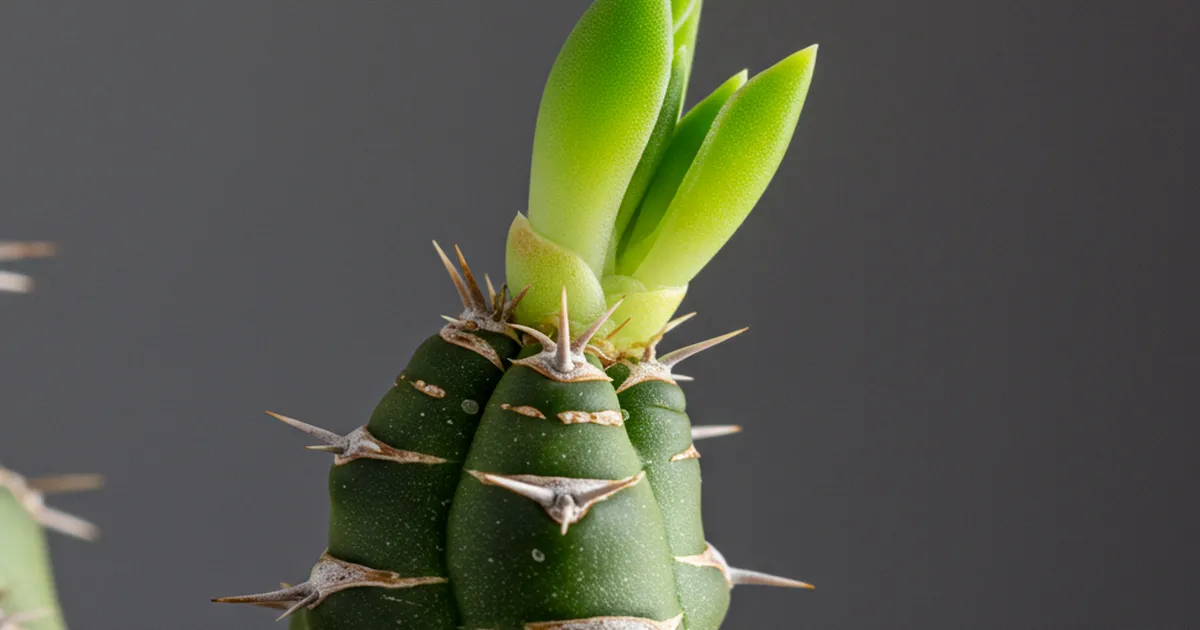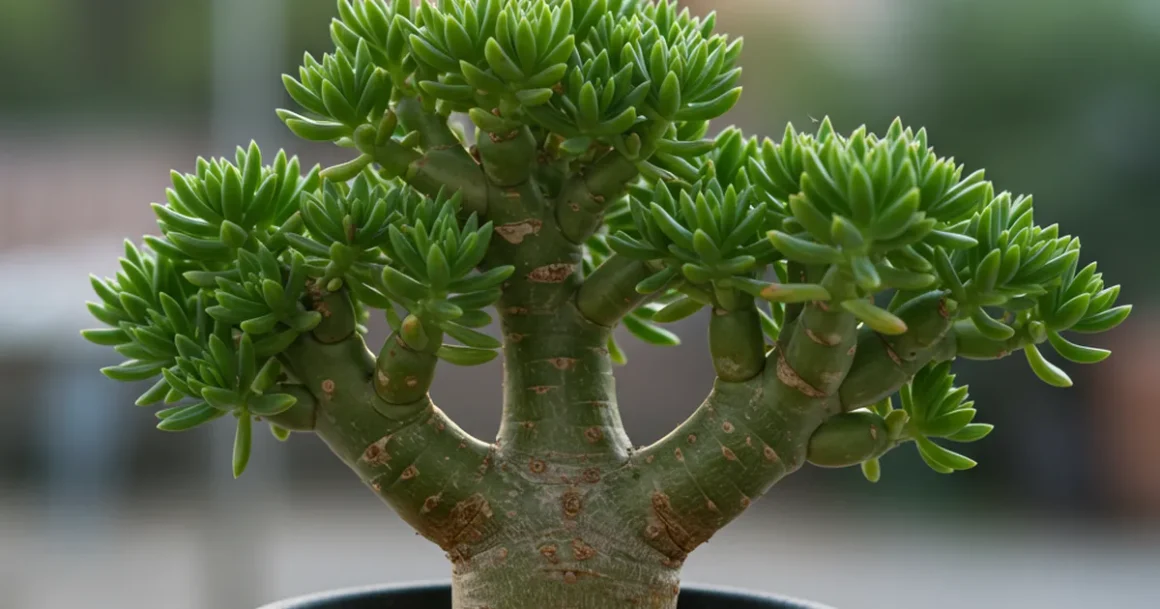Introduction:
The African milk tree (Euphorbia trigona) is originally from Central Africa. Despite its resemblance to a cactus, it is classified as a succulent plant and is known by various nicknames like candelabra cactus, cathedral cactus, friendship cactus, and good luck cactus. The plant features triangular stems with three distinct sides lined with ridges and thorns, along with teardrop-shaped leaves. It maintains its lush green color throughout the growing season, with new growth displaying a light green shade.
Similar to cacti, the African milk tree is a long-lasting plant that grows rapidly, reaching heights of about 1 to 2 feet per year and can grow up to 9 feet tall. It is commonly used as a hedge due to its fast and robust growth. When cultivated indoors, its height typically remains half of its maximum potential. The African milk tree offers several advantages, such as being low-maintenance, air-purifying, and possessing medicinal properties that can help with muscle swelling, ear pain, allergies, and inflammation caused by psoriasis.
| Common Name | African milk tree, African milk bush |
| Botanical Name | Euphorbia trigona |
| Family | Euphorbiaceae |
| Plant Type | Succulent |
| Mature Size | 6-9 ft. tall, 1-2 ft. wide |
| Sun Exposure | Partial |
| Soil Type | Loamy, well-drained |
| Soil pH | Neutral |
| Bloom Time | Spring, summer |
| Flower Color | White |
| Hardiness Zones | 9-11 (USDA) |
| Native Areas | Africa |
| Toxicity | Toxic to humans, toxic to
Varieties of African Milk Tree One type of the African milk tree is Euphorbia trigona f. rubra, commonly known as ‘Royal Red’. It is characterized by its eye-catching maroon or bright red foliage.
Trimming The African milk tree can grow to be very tall and has a relatively small and shallow root system. As a result, older plants may become top-heavy or even fall over, necessitating trimming. When trimming, it is important to always wear gloves and use a sharp, sterilized knife to remove stems. The cut you make will dry out and form a callus on its own. Be sure to maintain balance on both sides of the plant to prevent an uneven load on one side that could uproot the plant.
Propagating African Milk Tree African milk tree can be easily propagated from stem cuttings and air layerings. Due to the plant’s toxicity, it’s important to use proper protective gear when propagating, such as heavy gloves, and to wash your hands immediately if you come into contact with the milky sap. Propagating by CuttingsTo propagate through cuttings, start by gathering a sharp knife or hand pruners, alcohol wipes, a 4-inch container with potting medium, and coarse gravel. Sterilize the blade of your knife or scissors with alcohol, then cut off one of the plant’s “arms” at its base. Rinse the arm with cold running water until it stops oozing and allow it to dry on a paper towel, away from direct sunlight, for five to seven days to allow the tip to form a callus. Once the callus has developed, plant the arm in your container with the end about an inch below the soil surface. Place a layer of gravel on top of the soil to help support the cutting upright, then position the pot in a warm area with adequate light and a temperature between 65 and 75 F, but away from direct sunlight. Rooting typically occurs within two months. Once roots are visible, transfer the plant to a slightly larger, 6-inch pot. Propagating by Air LayeringAlthough less common than stem cutting, propagating African milk tree through air layering requires more patience but results in a larger plant. Begin by selecting a healthy, thick stem still attached to the plant and make a clean, diagonal cut halfway through with a sharp blade. Wrap the cut portion with moist sphagnum moss and then plastic wrap to maintain humidity. Roots are expected to form in about 6 to 10 weeks. Once a root ball is visible, cut the stem below the roots and plant it in well-draining soil. Water lightly as the plant begins to grow.
Planting and Replanting African Milk TreeWhen planting an African milk tree, it is crucial to ensure proper drainage and avoid overwatering. This plant thrives in a porous clay pot that can absorb excess water. For optimal water drainage, use sandy soil or a potting mix designed for succulents, especially when mixed with pumice or perlite. To accommodate its growth, repot the plant every one to two years, providing enough space for the roots to anchor it securely (possibly with stakes).
Surviving the WinterAfrican milk trees are not equipped to withstand cold temperatures. They usually struggle to thrive if the mercury drops below 50 degrees F, so it is crucial to only plant them in the ground if your climate is suitable. For potted plants, it is necessary to bring them indoors when the temperatures decrease. Position your succulent in a room with proper air circulation to reduce humidity and place it near a well-lit window with indirect sunlight.
Common Pests & DiseasesTypically, an African milk tree that is healthy does not easily fall victim to pests or diseases. However, it is important to be on the lookout for mealybugs, which create cotton-like threads. To eliminate them, prepare a mixture of water and mild dish detergent, then use a cloth soaked in this solution to wipe off the bugs. Alternatively, you can use rubbing alcohol on a paper towel or simply wash the bugs away with water from a garden hose. Excessive watering of the plant can lead to fungal issues like cork disease, characterized by cork-like patches on the stems. To salvage the plant, trim off the affected stems. If you notice yellowing or browning of the succulent, it may be a sign of root rot due to overwatering, necessitating the disposal of the plant.
Common IssuesOne of the most frequent problems encountered with African milk trees is either overwatering or underwatering the plant, leading to yellow and wilted leaves. It is much simpler to prevent this issue than to treat it, so ensure that your plant is situated in a warm location and water it sparingly so that the soil can dry out between waterings, but is not consistently dry. |
FAQ
How quickly does the African milk tree grow?
When cultivated outdoors, this large succulent can grow 1 to 2 feet annually and develop its distinctive candelabra shape. It can reach heights of up to 9 feet, which is why it is sometimes called a “tree.”
Can African milk trees thrive in full sunlight?
Indeed, African milk trees can thrive in full sunlight, but they thrive best in a location that receives bright, indirect sunlight and some partial shade throughout the day.
Is it possible to place my African milk tree outdoors?
African milk trees can be grown outdoors in areas with daytime temperatures ranging from 65 to 85 degrees Fahrenheit and nighttime temperatures between 60 and 70 degrees Fahrenheit. They prefer dry climates where the temperature does not fall below 45 degrees Fahrenheit.

